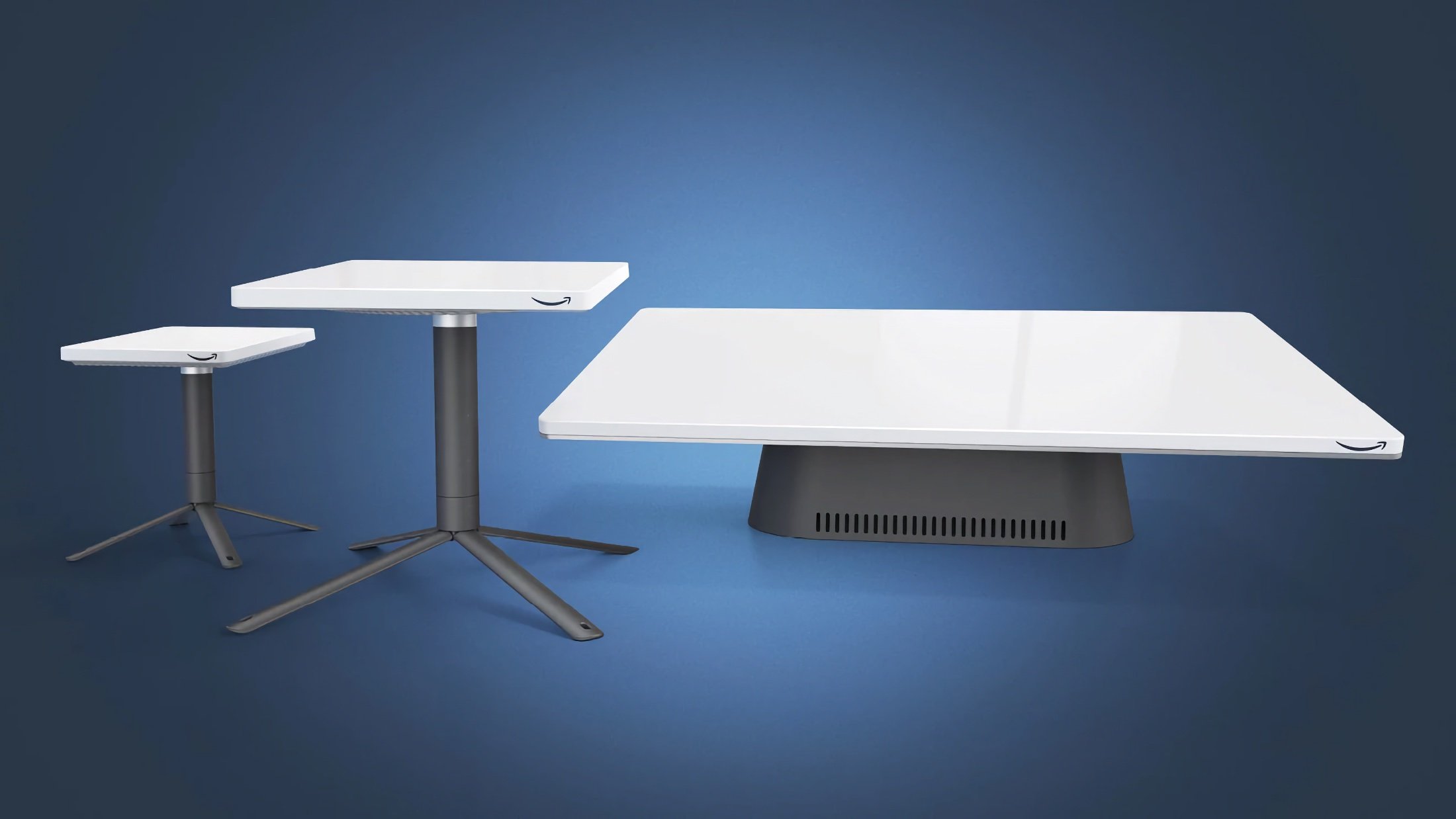
Amazon has unveiled its first Project Kuiper terminals as it prepares to go head-to-head with SpaceX’s Starlink.
Project Kuiper is Amazon’s plan to build a constellation of 3,236 satellites in low Earth orbit to provide high-speed internet anywhere in the world.
“Our goal with Project Kuiper is not just to connect unserved and underserved communities, but also to delight them with the quality, reliability, and value of their service,” said Rajeev Badyal, Amazon’s vice president of technology for Project Kuiper.
Amazon plans to launch its first Kuiper satellites in 2024. Two prototypes are set to be deployed after piggybacking on the United Launch Alliance’s Vulcan Centaur rocket in May.
Over the next five years, Amazon plans to launch 1,500 of its Kuiper satellites.
Ahead of the satellite launches, Amazon has shown off the first generation of the terminals that users will need to access the service.
The largest of the terminals measures 19 inches by 30 inches, about the size of a patio table. That particular terminal is designed for government and telecom operations and will deliver speeds of up to 1 Gbps.

The terminal designed for consumers measures just 11 inches square. Amazon claims the terminal will support speeds of up to 400 Mbps.

Amazon designed its own baseband chip for the terminals. With the codename Prometheus, the company says the chip has “the processing power of a 5G modem chip found in modern smartphones, the capability of a cellular base station to handle traffic from thousands of customers at once and the ability of a microwave backhaul antenna to support powerful point-to-point connections.”

A key goal for Amazon was to ensure the terminals are cost-efficient.
Starlink’s terminals cost around $1,500 to manufacture (down from $3,000 initially). SpaceX charges users $599 for each terminal so the firm is taking an initial hit of around $900 for each one sold. Costs are then recouped through monthly service fees which currently start at ~$100/month.
In contrast, Amazon says its Kuiper terminals cost under $400 to manufacture. The company is yet to announce how much it will charge users for the terminal, and for ongoing service access, but the much lower manufacturing costs gives it a lot more flexibility.
“From day one, every technology and business decision we’ve made has centred on what will deliver the best experience for different customers around the world, and our range of customer terminals reflects those choices,” added Badyal.
Amazon’s hardware looks promising but it still has a long way to go to match the maturity of its biggest competitor. Starlink already has over 3,000 satellites in orbit – of almost 12,000 planned – and has become quite literally battle-tested in Ukraine.
(Imagery Credit: Amazon)

Looking to revamp your digital transformation strategy? Learn more about Digital Transformation Week taking place in Amsterdam, California, and London. The event is co-located with the IoT Tech Expo.
Explore other upcoming enterprise technology events and webinars powered by TechForge here.





